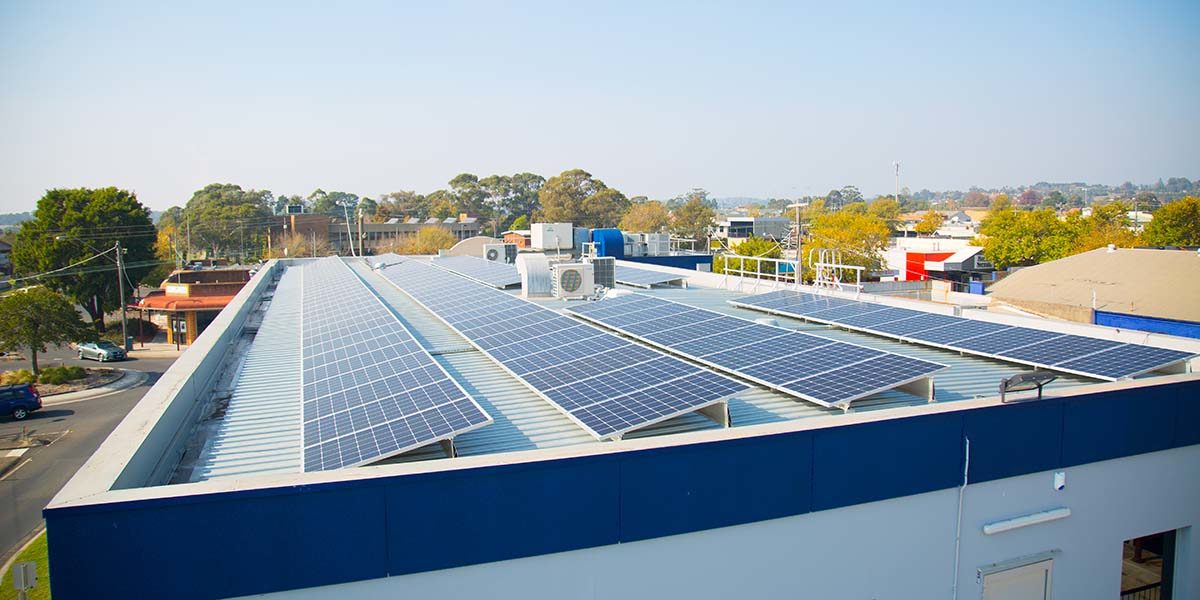Bank Australia has become the first bank in the country to see its entire operations running on renewable electricity. This has been made possible through the installation of rooftop solar at the bank’s head office in Melbourne and National Contact Centre in the Latrobe Valley, and entering into a 10-year agreement with renewable energy developer Pacific Hydro as part of the Melbourne Renewable Energy Project.
Bank of Australia is one of the 14 members of the Melbourne Renewable Energy Project, which combines purchasing power to support the construction of the 80 MW wind farm at Crowlands, near Ararat, with a long-term PPA inked with Pacific Hydro for 88 GWh of electricity per year. The wind farm started supplying power to the grid in January allowing the City of Melbourne to announce the switch to 100% renewables.
Damien Walsh, Bank Australia Managing Director, said that he was proud to see the bank achieve the goal it set in 2015 of switching over to 100% renewable electricity. “Our customers have told us they want to see clear action on climate change, and we’re pleased to show how business can lead on climate,” he said. “By running on 100% renewable electricity, we’ll be avoiding 780 tonnes of carbon emissions per year, which is the equivalent to taking 232 cars off the road.”
The announcement of the switch to 100% renewable electricity comes only a month after Bank Australia joined RE100 – an initiative launched in 2014 by The Climate Group in partnership with CDP which has seen 174 businesses around the world commit to going 100% renewable. It was the second Australian business to join the club after Commonwealth Bank of Australia, which is sourcing energy from the largest wind farm in New South Wales – the 270 MW Sapphire Wind Farm – under a 12-year PPA as of January this year, and is moving towards 100% renewable power by 2030.
Westpac was the third major bank to sign up to the to the global initiative RE100 backed by a 10-year PPA to purchase over a quarter of the output from the Bomen Solar Farm, while Atlassian became the first Australian tech company to sign up and commit to sourcing 100% renewable electricity for its global operations by 2025.
“Congratulations to Bank Australia on reaching its RE100 goal so quickly – this is a leading financial institution seizing the big investment opportunities of the future,” said Sam Kimmins, Head of RE100, The Climate Group. “Partnering with others to buy wind power at an affordable price is a model used by leading businesses around the world. With benefits ranging from lower risk to increased global competitiveness, we expect many more Australian companies to get going on the path to 100% renewable power.”
As it joined RE100, Bank of Australia called on more companies to seize the opportunity to lead the growing corporate push for clean energy in Australia. It now intends to share its learnings on switching to 100% renewable electricity with other companies to help speed the energy transition in Australia.
Indeed, Australian companies are starting to see bottom line benefits of renewable energy. To meet the growing demand, innovative PPAs and services for C&I customers have emerged at pace with a number of flexible new solar PV contract models and services on offer.
Saving on electricity bills is one of the key drivers for Australian commercial and industrial energy customers with annual energy use of more than 100 MWh per year to negotiate a renewable energy PPA. As shown by the latest figures from commercial electricity retailer Flow Power, its high-use energy customers have collectively saved $14 million with power purchase agreements since the start of 2018.
Knowing that “a well negotiated PPA can potentially provide savings between 15 and 47% on the energy component of a typical electricity bill expected in 2020”, a growing number of Australian companies are eager to make the switch. Fortunately, record investment in clean energy is making this possible. In 2018, large-scale renewables investment in Australia totaled more than $20 million, with almost $11.5 billion in big PV projects currently under construction.
This content is protected by copyright and may not be reused. If you want to cooperate with us and would like to reuse some of our content, please contact: editors@pv-magazine.com.









By submitting this form you agree to pv magazine using your data for the purposes of publishing your comment.
Your personal data will only be disclosed or otherwise transmitted to third parties for the purposes of spam filtering or if this is necessary for technical maintenance of the website. Any other transfer to third parties will not take place unless this is justified on the basis of applicable data protection regulations or if pv magazine is legally obliged to do so.
You may revoke this consent at any time with effect for the future, in which case your personal data will be deleted immediately. Otherwise, your data will be deleted if pv magazine has processed your request or the purpose of data storage is fulfilled.
Further information on data privacy can be found in our Data Protection Policy.